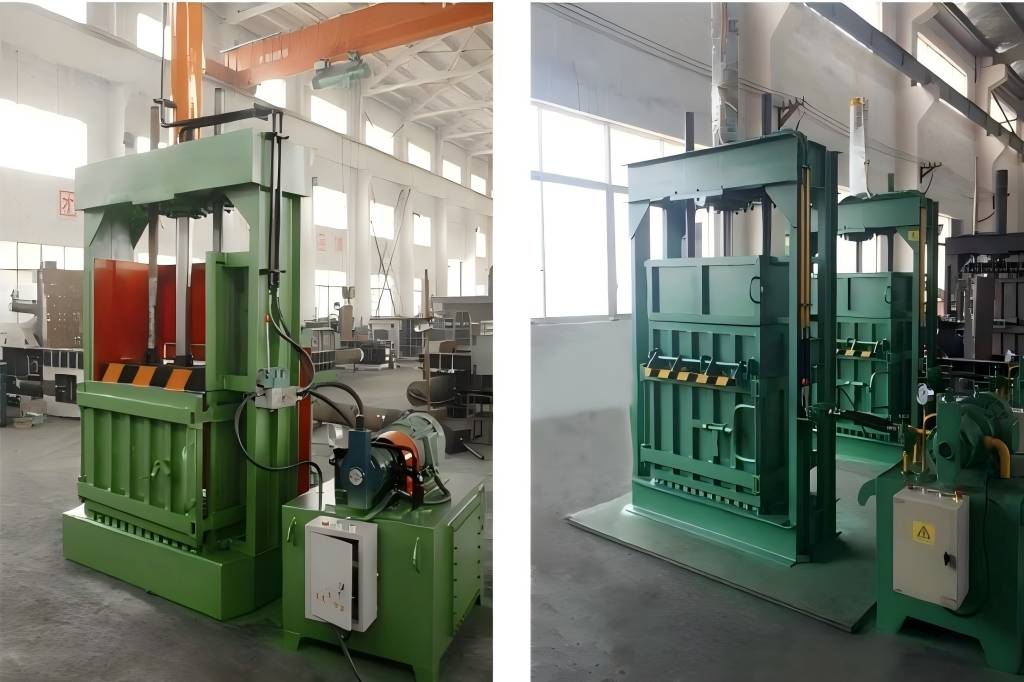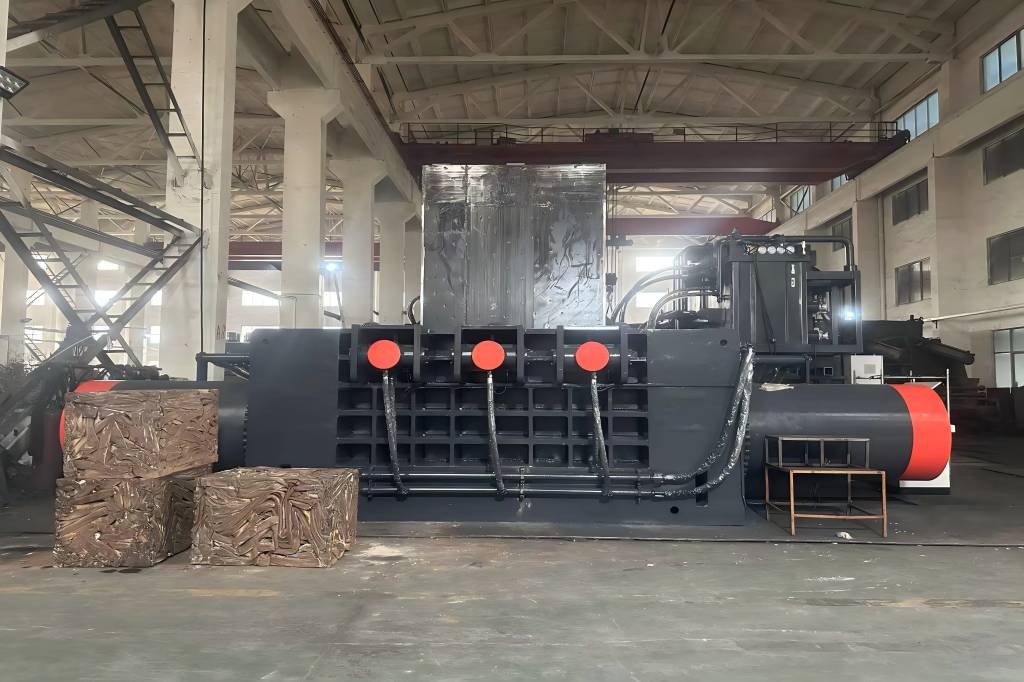In the evolving landscape of waste management, vertical balers are essential for companies handling cardboard waste. These machines streamline recycling and enhance operational efficiency and sustainability.
Knowing how to make the most of vertical balers is essential for companies looking to enhance their waste management procedures. This article explores effective strategies for optimizing vertical baler operations in cardboard recycling.
Understanding Vertical Balers
Cardboard and other recyclable materials are compressed into bales for convenient handling and transportation using vertical balers, which are small, strong devices.
For establishments like retail stores, warehouses, and manufacturing plants that produce large volumes of cardboard waste, they are especially beneficial. Vertical balers reduce the volume of waste, helping organizations save space and improve their recycling rates.
Key Benefits
- Space Efficiency: By compressing cardboard into manageable bales, vertical balers help organizations save valuable floor space.
- Cost Savings: Lower disposal expenses and higher recycling profits can result from reducing trash volume.
- Enhanced Safety: Proper baling reduces the risk of injury associated with loose, overflowing waste.
- Improved Environmental Impact: Optimizing recycling efforts contributes to sustainability goals and reduces landfill contributions.

Tips for Optimizing Vertical Baler Use
1. Regular Maintenance
Vertical balers require routine maintenance to guarantee optimum performance and endurance. Create a regular maintenance plan that consists of:
- Everyday Verifications: Look for any obvious wear or damage on the baler. Verify the condition of the compression plates and cutting blades.
- Lubrication: To stop wear and tear, lubricate moving parts on a regular basis in accordance with the manufacturer’s recommendations.
- Cleaning: Keep the baler clean of cardboard residue and debris, which can hinder performance and lead to malfunctions.
2. Proper Training
Investing in training for staff on how to operate vertical balers is critical. Proper training ensures that employees understand the machine’s functions and safety protocols. Key training elements include:
- Operating Procedures: Teach employees the correct methods for loading cardboard and operating the baler.
- Safety Measures: Emphasize safety measures, such as wearing the proper personal protective equipment (PPE), to avoid mishaps.
- Troubleshooting: Give employees the tools they need to recognize typical problems and know when to seek expert help.
3. Material Preparation
Before loading cardboard into the baler, ensure that the material is properly prepared. This includes:
- Flattening Boxes: Encourage staff to flatten boxes before loading them into the baler to maximize space and efficiency.
- Sorting: Separate cardboard from other materials to avoid contamination and improve recycling quality.
- Removing Non-Cardboard Items: Check for and remove any plastic or metal components that may be mixed in with the cardboard.
4. Load the Baler Effectively
Effective loading practices can significantly enhance the efficiency of a vertical baler. Consider the following tips:
- Do Not Overload: Adhere to the manufacturer’s recommended load capacity to prevent jams and ensure smooth operation.
- Distribute Weight Evenly: Load the baler in a way that distributes weight evenly, allowing for balanced compression.
- Use the Right Size Baler: Ensure the baler is appropriately sized for the volume of cardboard produced. Larger operations may benefit from larger balers to handle increased waste.
5. Monitor Bale Quality
Regularly check the quality of the bales produced by the vertical baler. High-quality bales are easier to handle, transport, and sell. Tips for maintaining bale quality include:
- Tight Compression: Ensure bales are tightly compressed to prevent them from breaking apart during handling.
- Consistent Size: Monitor bale sizes for consistency, as uniform bales are more appealing to recyclers.
- Proper Tying: Use the correct tying material to secure bales and prevent them from falling apart during transport.
6. Optimize Collection and Transport
To further enhance efficiency, optimize the processes for collecting and transporting bales. This includes:
- Scheduling Regular Pickup: Coordinate with recycling companies to establish a regular pickup schedule for bales. This prevents excess accumulation of bales on-site.
- Utilizing Forklifts or Pallet Jacks: Use appropriate equipment to move bales safely and efficiently, reducing the risk of injury.
- Designating a Collection Area: Create a dedicated area for storing bales until they are picked up. This helps keep operations organized and efficient.
7. Analyze Performance Metrics
To continually improve vertical baler operations, analyze performance metrics regularly. Consider tracking:
- Volume of Cardboard Processed: Monitor the amount of cardboard processed weekly or monthly to identify trends and adjust operations accordingly.
- Bale Production Rates: Keep track of how many bales are produced in a given time frame to evaluate efficiency.
- Cost Savings: Calculate savings from reduced waste disposal costs and increased recycling revenues to demonstrate the financial benefits of optimizing operations.
8. Engage Employees in Sustainability Goals
Promoting employee participation in sustainability projects can help to develop an efficient and accountable culture. Strategies include:
- Setting Recycling Goals: Establish clear recycling targets for the organization and communicate these to all staff members.
- Recognition Programs: Put in place initiatives to honor and thank staff members for their contributions to recycling and trash reduction.
- Campaigns for Education: Continue to educate people on the value of recycling and appropriate trash management techniques.
9. Invest in Technology
As technology advances, consider investing in upgrades that can enhance baler efficiency. Options include:
- Automatic Baler Feeders: These devices can automate the loading process, improving speed and reducing labor costs.
- Baler Management Software: Utilize software that tracks baler performance, maintenance schedules, and waste metrics to streamline operations further.
10. Collaborate with Experts
Finally, collaborating with waste management experts can provide valuable insights and recommendations tailored to specific operations. Consult with:
- Waste Management Consultants: Professionals who specialize in waste management can assess operations and suggest improvements.
- Baler Manufacturers: Engage with baler manufacturers for advice on optimizing the use of their equipment and troubleshooting issues.
Conclusion
Optimizing the usage of vertical balers in cardboard businesses is essential for raising sustainability, cutting expenses, and increasing efficiency.
By focusing on regular maintenance, staff training, proper material preparation, and performance monitoring, businesses can significantly boost their recycling processes. Engaging employees, investing in technology, and collaborating with experts further enhance operational efficiency.




